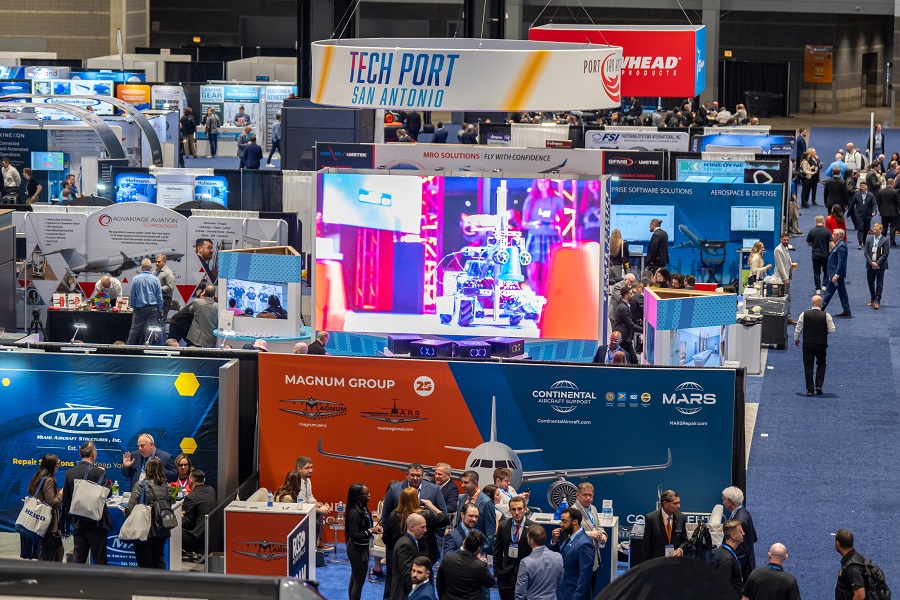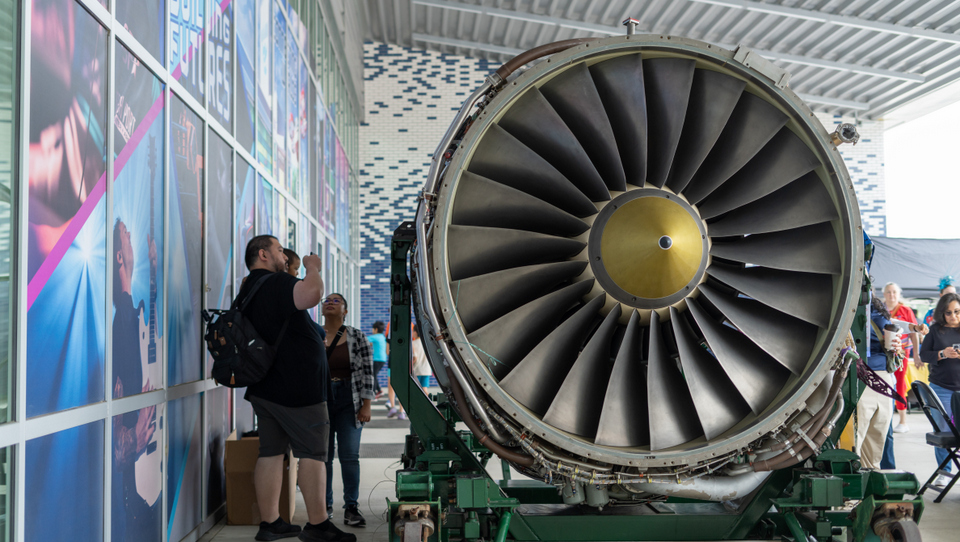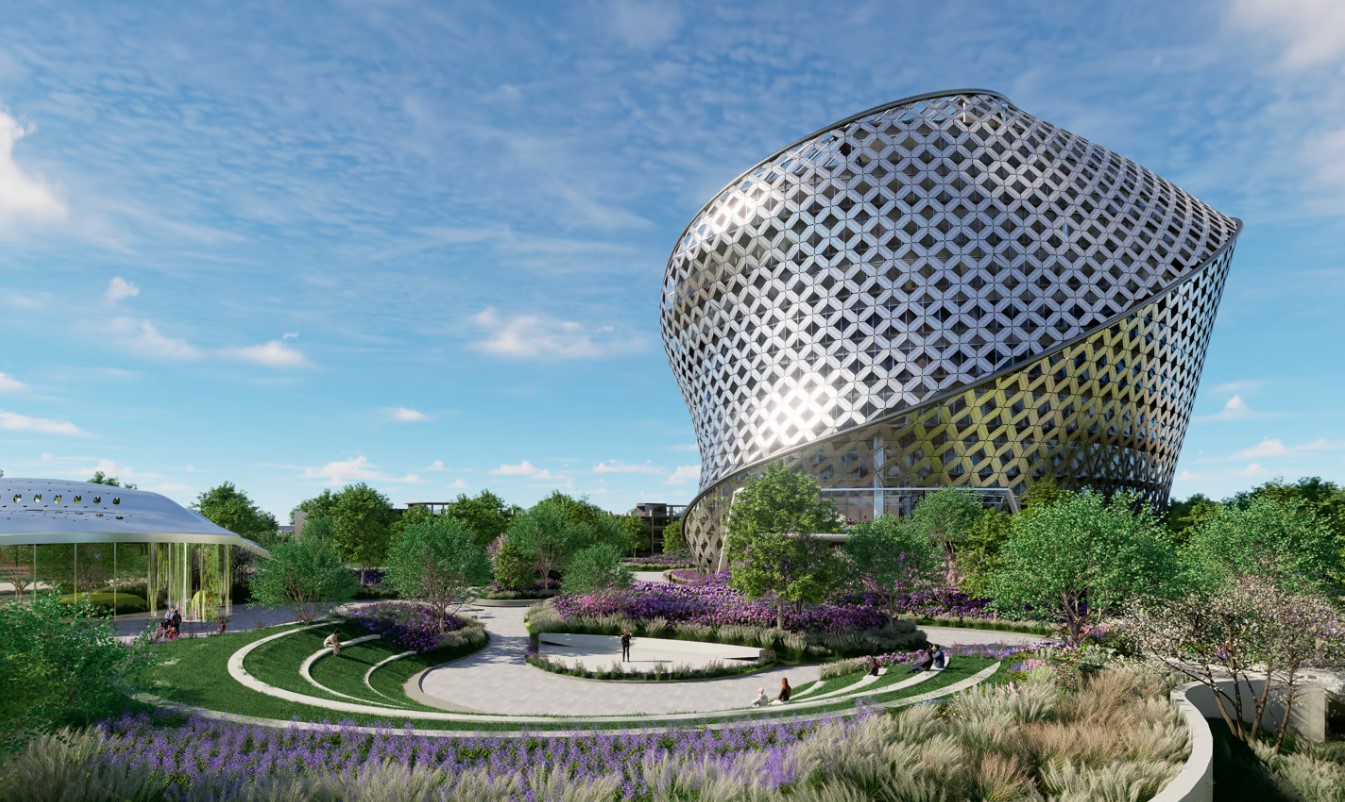05-08-2024
Downloadable Version

Officials have floated a proposal to build the 16th Air Force a consolidated campus on the Port.
(REPRINTED UNDER LICENSE FROM THE SAN ANTONIO EXPRESS-NEWS VIA COPYRIGHT.COM)
By Brandon Lingle, Staff Writer - San Antonio Express-News
Though no one in the Pentagon asked, Port San Antonio wants to help the 16th Air Force find a new home to carry out its military cyber mission on the organization's Southwest Side industrial campus.
The Port has put together a $1 billion-plus proposal for a new campus to house the unit that's also known as Air Forces Cyber, is assembling a coalition of economic development and government officials to back it and has pitched the plan to the Air Force.
The sprawling complex would move the classified work done by the unit from aging buildings spread across Joint Base San Antonio-Lackland to the Port. The current setup, the result of years of reorganizations as it worked to keep up with advancing technology, is not optimal for the group focused on helping safeguard America across the information domain.
With military construction funding often slow and difficult to get, the Port has proposed a sort of public-private partnership with the Department of Defense to build a consolidated campus for Air Forces Cyber and its partner agencies on the site formerly known as Kelly Air Force Base.
Cyber Shift?

Port San Antonio has proposed a plan to build a new headquarters for the 16th Air Force, known as Air Forces Cyber, on the Port's campus, which has become a hub for tech companies.
A proposal obtained by the San Antonio Express-News outlines the Port's plans to develop the complex via an intergovernmental support agreement, an arrangement more commonly used for municipalities to provide support services on military installations.
"This process would allow us to operate at more commercial construction speed and to build a facility, we think, about a billion dollars less than what it would cost under typical military construction processes," Port San Antonio President and CEO Jim Perschbach said this week. It also could get it done in half the time it would take to get it done under military timelines.
If approved, the Port estimates it could develop a schematic design of the campus at Billy Mitchell Boulevard and Gen. Hudnell Drive in about 18 months and at a cost of roughly $14 million. The entire project will cost between $1.2 billion and $1.4 billion.
"The MilCon (military construction cost) on that is probably $2.2 (billion) to $2.4 billion, so about a billion dollars more," he said. "We think that we can go from startup design to completion in about six years and MilCon would take about 12 years to do the same process."

Lt. Gen. Kevin Kennedy, center, salutes Gen. Mark Kelly after assuming command of the 16th Air Force, known as Air Forces Cyber, from Lt. Gen. Timothy Haugh, in July 2022 at Joint Base San Antonio-Lackland. A plan being quietly floated by Port San Antonio would move the 16th from JBSA to the new facilities at the port.
'Elegant solution'
The Port says working through an intergovernmental support agreement could bypass the bureaucracy and inefficiencies of the military construction process.
"Even if they just take us up on the pre-development services, we can come back with the design, the numbers, the timeline, the schedule and the engineering on the campus in a year and a half," Perschbach said. "They won't even be able to get to it in a year and a half."
He's not taking a swipe at those in military construction, Perschbach said.
"They got a million other things they need to be doing so we take that off of their back and we move forward with it," he said. "And if we do it, and we do it for a billion dollars less, that's a billion dollars less to the taxpayer and gets it in operation in half the time."
It does so by putting a new twist on intergovernmental service agreements.
The commonly focus on services municipalities typically can provide. Those include waste removal, recycling, utilities and road maintenance, pest control or water and wastewater treatment. The idea is to leverage existing governmental services across entities to drive cost savings and increase efficiency.
Perschbach thinks such an agreement could work for the Port to build a military campus, too.
"Under the statute, the state or local government services they provide have to be the services they do in their normal course of existence," Perschbach said. "We are a real estate development company. We just happen to be a political subdivision to the State of Texas, so it becomes, as the engineers say, and elegant solution."
Ideally, he said, the Port would design and build the campus under the agreement then, at a pre-determined point, transfer the property to the U.S. government.
Port officials declined to elaborate on the size of the proposed campus, saying the details are part of ongoing discussions. However, it shared its general location on largely vacant land south of Billy Mitchell and Gen. Hudnell in the north section of the Port formerly known as Kelly AFB Lindbergh Park.

Jim Perschbach, CEO of Port San Antonio, shown given a state of the port address at Boeing Center at Tech Port in June 2023, has proposed a plan to build a new campus for the 16th Air Force, also known as Air Forces Cyber. Photo: Kin Man Hui/Staff photographer.
Business benefits
Having the 16th Air Force at the Port could foster collaboration across various industries in both classified and unclassified business and venues, the Port says.
"We could design and build it so it is directly proximate to the commercial, academic and innovation sectors that are already here, and that allows for a close collaboration," Perschbach said.
And, another advantage of the proposal, it says, is that the state, local and private sector resources could help support it.
According to the proposal, the conceptual design involves consolidating the 16th Air Force's headquarters, the Air Forces Cyber operations center, the 67th Cyberspace Wing and the 688th Cyberspace Wing.
Then, the plan calls for enhanced use lease agreements to foster reuse of some of the 16th Air Force's old buildings and demolition of others. Such lease agreements enable private developers to build or renovate federal property.
Building consensus
Perschbach has been briefing stakeholders across the community. Those include the Greater San Antonio Chamber of Commerce and Greater:SATX, the regional economic development authority. He also shared the proposal with lawmakers and officials during the Chamber's annual trip to Washington, D.C. in early February.
The campus is now one of Greater:SATX's top federal priorities, according to President Jenna Saucedo-Herrera, along with direct air service from San Antonio to Reagan International Airport in Washington, D.C.
"So, depends on who you ask," she said. "Sometimes this (campus) is number one and (air service to) DCA is number two, sometimes DCA is number one and this is number two. But I'll tell you I was just in D.C. a couple of weeks ago, and these are the top priorities."
Greater:SATX is under a non-disclosure agreement with Port S.A. so she declined to get into specifics, but Saucedo-Herrera said using an intergovernmental support agreement would be a new twist on military facilities development.
"I think that's what is going to differentiate this effort from a lot of different efforts that we have supported," she said. "From a time and a cost perspective, I don't think anybody, certainly, any sort of on-base solutions, can compete."
The next step, she said, is to "elevate (the proposal) more broadly to business leaders in a confidential, controlled and productive way."
Jeff Fair, the San Antonio Chamber of Commerce's vice president of economic development, agreed the Port has found a unique solution to a difficult problem.
"This is some fresh thinking," he said. "I think all of us who understand the bureaucratic inertia and the challenges that it faces also understand that trying to break down those walls is worth it because the idea is so good that it's worth going through that process. So we've been trying to help with that piece."

Jim Perschbach, president and CEO of Port San Antonio, speaks during a recent panel discussion about the future of mobility held at Boeing Center at Tech Port on the Port's Southwest Side campus. Photo: Jessica Phelps.
Does DOD want it?
The big question remains, however: Will the Pentagon accept the help? Perschbach acknowledged that it has not yet asked for the Port's help to address the 16th Air Force's need for new facilities.
"We are continuing discussion with folks at the Pentagon about doing what we call the pre-development agreement," he said. "We're continuing to have those discussions. We've been back and forth to the Pentagon on that."
The 16th Air Force oversees more than nine wings across the country including the Air Force Technical Applications Center at Patrick Air Force Base, Florida. Its vast mission spans cyberspace operations, electronic warfare, information operations, and intelligence, surveillance and reconnaissance.
With its varied mission, the unit's commander answers to multiple bosses, including the director of the National Security Agency, the chief of the Central Security Service, the undersecretary of defense for intelligence and security, Air Combat Command and U.S. Cyber Command.
Rep. Henry Cuellar, D-Laredo, raised the proposal to Ravi Chaudhary, assistant secretary of the Air Force, during an April 17 hearing of the House Appropriations Subcommittee on Military Construction, Veterans Affairs and Related Agencies.
Cuellar's office didn't respond to a request for comment, but his written statement for the hearing called the Port's proposal "an innovative approach to the planning, design, and construction of the consolidated campus for the 16th Air Force."
It continued: "I appreciate the willingness of the Air Force to engage in these discussions. We all understand the need for innovative approaches that will not only potentially save the Air Force significant money, but also result in a state-of-the-art facility for our warfighters delivered more expeditiously than other deliver methods. I would like to ask your commitment to continue these discussions so that the Congress can fully evaluate the most efficient and cost effective way to complete this important campus."
The Air Force did not immediately respond to requests for comment.
BANNER IMAGE: A conceptual rendering of a 16th Air Force campus being proposed at Port San Antonio and other nearby facilities. At far left, the existing Boeing Center at Tech Port can be seen, and at center right, in white is what it's now calling Innovation Tower, a new office building it's working to develop. Image: Port San Antonio.














